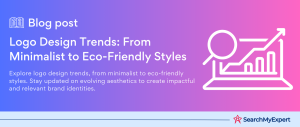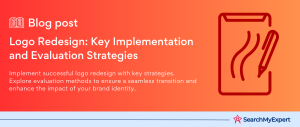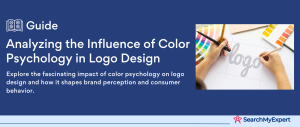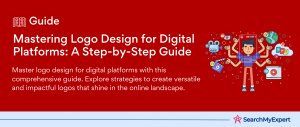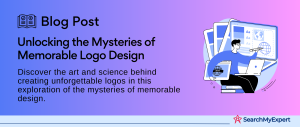Logo Design Workshops and Training
Captivating Hook
Imagine a world where every brand is instantly recognizable, where a simple symbol can evoke emotions, tell a story, and create a connection. This is the power of a well-designed logo. In today’s fast-paced market, a logo is not just a part of branding; it’s the heart of a company’s identity.
Defining the Topic
Logo design workshops and training sessions are more than just learning to create aesthetically pleasing designs. They are crucibles where art meets commerce, where creativity blends with strategy. These sessions are designed for both aspiring designers eager to make their mark and established professionals looking to refine their skills. Here, participants learn the nuances of design, the psychology of colors, and the art of creating a brand identity through a logo.
Roadmap Outline
- Understanding the Basics: Grasping the fundamentals of logo design, including history, significance, and trends.
- Design Principles and Techniques:
Diving into the core principles of design, exploring tools, software, and techniques. - Psychology of Colors and Fonts: Learning how different colors and fonts can influence brand perception.
- Interactive Workshops: Engaging in hands-on activities for practical experience.
- Real-World Applications:
Analyzing case studies and real-world examples of successful logo designs. - Feedback and Revision:
Understanding the importance of feedback and learning how to refine designs. - Building a Portfolio: Tips on creating a compelling portfolio to showcase skills.
- Career Pathways in Logo Design:
Exploring various career options and opportunities in the field.
Understanding Logos and Branding
The Power of Logos
Logos are more than just graphic designs; they are the visual embodiments of a brand’s identity. A logo acts as a silent ambassador, conveying the essence of a brand without uttering a single word. It’s fascinating how these small symbols can wield enormous power, influencing consumer behavior, shaping perceptions, and building loyalty. They can evoke emotions, communicate values, and become ingrained in the cultural fabric.
Elements of a Successful Logo
- Typography: The art of selecting and arranging type. The right font can speak volumes about the brand’s personality.
- Color Psychology: Colors are not just aesthetic choices; they carry meanings and emotions. Understanding color psychology is crucial in logo design.
- Symbolism:
A logo’s imagery can tell a story, symbolizing the brand’s values and mission. - Visual Hierarchy:
Good logos have a clear structure, guiding the viewer’s eye and making the design memorable and recognizable.
Evolution of Logo Trends
Logo design is an ever-evolving art. From the intricate emblems of the early 20th century to the minimalist designs of today, logo trends reflect the changing tastes and cultural shifts. Iconic logos, like the timeless Apple logo or the evolving Google logo, showcase how these designs can adapt yet maintain their core identity. Understanding these trends is key to creating logos that are both contemporary and enduring.
Workshop Basics – Tools and Techniques
Essential Software for Logo Creation
- Adobe Illustrator: A powerhouse in vector graphics, ideal for crafting scalable logos with precision and flexibility.
- Inkscape:
A free, open-source alternative offering robust features for vector illustration. - CorelDRAW: Known for its intuitive interface and versatile design capabilities.
Design Principles and Concepts
- Balance: Ensuring elements in the logo are proportionally distributed for visual stability.
- Negative Space: The art of using the background to create an additional shape or symbol.
- Simplicity:
A simple logo is often the most memorable and versatile.
Each of these principles will be illustrated with practical examples, demonstrating how they can be effectively applied in logo design.
Brainstorming and Sketching
Participants will engage in brainstorming sessions, where they’ll learn to think outside the box and generate a plethora of ideas. This phase is about letting creativity flow without restrictions. Following this, the ideas will be translated into rough sketches. This hands-on approach allows participants to see their thoughts take form and sets the foundation for the final logo design.
Deep Dive – Different Logo Styles
Wordmarks
Wordmarks, or logotypes, are logos made primarily of text. They rely on typography to make a statement. Key aspects include:
- Legibility: Ensuring the type is easy to read at any size.
- Visual Harmony: The type should be aesthetically pleasing and align with the brand’s identity.
Examples like Google and Coca-Cola showcase how typography can be the star of the logo.
Lettermarks and Monograms
Lettermarks and monograms use initials to create a logo. They are:
- Compact: Ideal for brands with long names.
- Stylized:
Creative typography or integration of design elements can make these logos stand out.
Think of IBM or HBO, where the initials become the brand’s identity.
Brand Mascots and Icons
Mascots and icons are:
- Personable: They can personify the brand, making it relatable.
- Memorable: Their visual appeal can make a brand more memorable.
Examples include Twitter’s bird or KFC’s Colonel Sanders.
Abstract and Symbolic Logos
These logos use:
- Abstract Shapes: To convey a brand’s ethos without being literal.
- Symbolism:
To embed deeper meanings or values.
Nike’s swoosh is a prime example, symbolizing motion and achievement.
From Concept to Completion
Refine and Iterate
The journey from a rough sketch to a polished logo involves:
- Refinement: Polishing sketches, focusing on details.
- Feedback Incorporation:
Using critiques to improve the design. - Digital Iterations:
Transforming sketches into digital formats, using software like Adobe Illustrator.
This stage is about evolution and improvement, turning good ideas into great logos.
Color Palette Selection
Color selection is critical. The right palette can:
- Convey the Brand’s Message: Colors evoke emotions and can communicate brand values.
- Appeal to the Target Audience:
Different demographics may respond differently to color schemes.
Participants will learn to choose colors thoughtfully, considering cultural and psychological aspects.
Mockup and Presentation
Final step involves:
- Mockups:
Displaying the logo in real-world applications (e.g., business cards, websites). - Presentation Skills:
Teaching how to present the logo, explaining the design choices and how it reflects the brand’s identity.
This phase helps participants understand how their logo will interact with the world.
Case Studies with Real-Life Examples and Inspiration
Showcasing Successful Logo Designs
In this section, we delve into iconic logos and dissect their success:
- Apple’s Simplicity:
Analyzing how Apple’s logo evolved yet maintained its minimalistic appeal. - FedEx’s Hidden Arrow: Exploring the clever use of negative space in FedEx’s logo.
- Nike’s Swoosh: Understanding the power of simplicity and symbolism in Nike’s iconic symbol.
These examples provide insights into how great logos become synonymous with their brands.
Sharing Inspiring Design Stories
- Interviews with Renowned Designers: Gaining wisdom from experts who’ve created some of the most recognized logos.
- Design Challenges and Solutions: Highlighting real-life scenarios where designers overcame obstacles to create memorable logos.
These stories not only inspire but also offer practical lessons in creativity and problem-solving.
Recap of Key Learnings
In this workshop, we’ve journeyed through the fascinating world of logo design. Key takeaways include:
- The Power of Logos: Understanding their impact on branding and consumer perception.
- Design Principles: Mastering the basics of balance, simplicity, and color psychology.
- Different Logo Styles:
Exploring wordmarks, lettermarks, mascots, and abstract designs. - From Concept to Completion:
Learning the process of refining and presenting a logo. - Real-Life Case Studies:
Gaining inspiration from successful logos and their creators.
Resources and Tools for Continuous Learning
- Online Tutorials:
Websites like Skillshare and Udemy offer in-depth courses in logo design. - Design Communities:
Join platforms like Behance or Dribbble to connect with other designers. - Software Recommendations: Experiment with different tools like Adobe Illustrator, CorelDRAW, or Inkscape.
Call to Action
Take what you’ve learned and apply it. Stay curious, stay creative. Design a logo that tells a story, that represents a brand in its truest form. Share your creations, gather feedback, and keep refining your skills. Your journey in logo design is just beginning.
Conclusion
In this comprehensive journey through the realm of logo design, we’ve unpacked the nuances and intricacies that go into creating effective and memorable logos. From understanding the historical and psychological significance of logos to exploring various design techniques and styles, this workshop aimed to provide a holistic view of logo design.
Designing a logo is not just creating a brand symbol; it’s about crafting a story, an identity, and an emotional connection. So, take your learnings, apply them, and carve your unique path in the world of logo design.
Collaborate with creative
Logo Design Agencies for a memorable logo.
Table of Contents
Toggle

